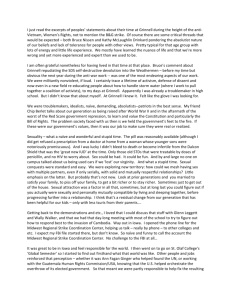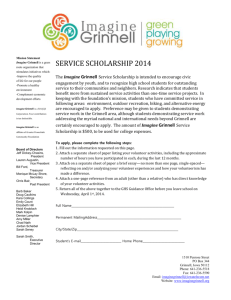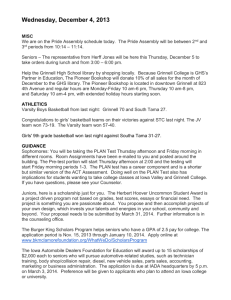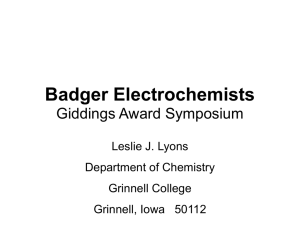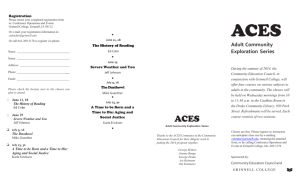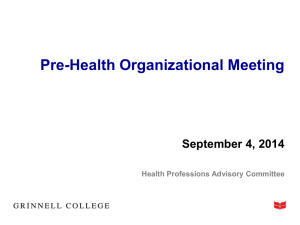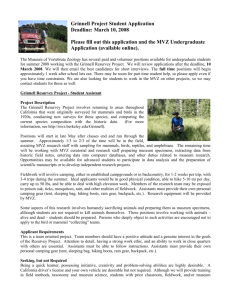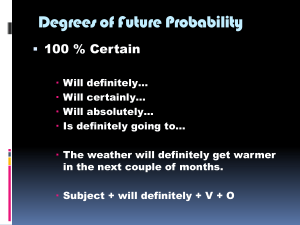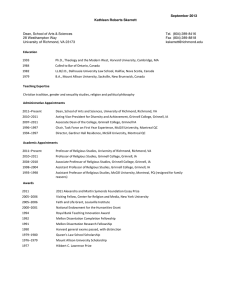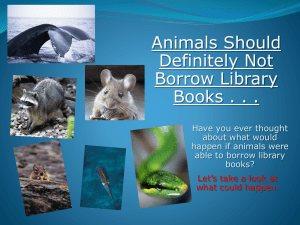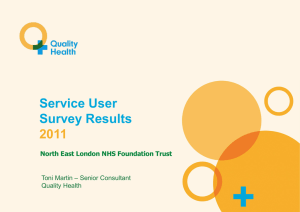Microsoft PowerPoint 2007 - Ideals - University of Illinois at Urbana
advertisement
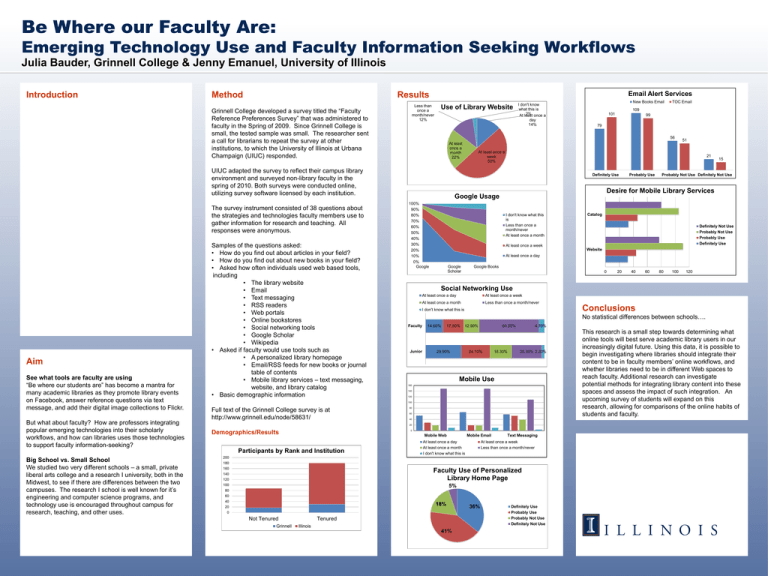
Be Where our Faculty Are: Emerging Technology Use and Faculty Information Seeking Workflows Julia Bauder, Grinnell College & Jenny Emanuel, University of Illinois Introduction Method Email Alert Services Results Less than once a month/never 12% Grinnell College developed a survey titled the “Faculty Reference Preferences Survey” that was administered to faculty in the Spring of 2009. Since Grinnell College is small, the tested sample was small. The researcher sent a call for librarians to repeat the survey at other institutions, to which the University of Illinois at Urbana Champaign (UIUC) responded. Use of Library Website day 14% Aim See what tools are faculty are using “Be where our students are” has become a mantra for many academic libraries as they promote library events on Facebook, answer reference questions via text message, and add their digital image collections to Flickr. But what about faculty? How are professors integrating popular emerging technologies into their scholarly workflows, and how can libraries uses those technologies to support faculty information-seeking? Samples of the questions asked: • How do you find out about articles in your field? • How do you find out about new books in your field? • Asked how often individuals used web based tools, including • The library website • Email • Text messaging • RSS readers • Web portals • Online bookstores • Social networking tools • Google Scholar • Wikipedia • Asked if faculty would use tools such as • A personalized library homepage • Email/RSS feeds for new books or journal table of contents • Mobile library services – text messaging, website, and library catalog • Basic demographic information At least once a month 22% Big School vs. Small School We studied two very different schools – a small, private liberal arts college and a research I university, both in the Midwest, to see if there are differences between the two campuses. The research I school is well known for it’s engineering and computer science programs, and technology use is encouraged throughout campus for research, teaching, and other uses. 100% 90% 80% 70% 60% 50% 40% 30% 20% 10% 0% Google I don't know what this is Less than once a month/never At least once a month Google Scholar Definitely Not Use Probably Not Use Probably Use Definitely Use 0 20 40 60 80 100 120 Social Networking Use At least once a day At least once a week At least once a month Less than once a month/never I don't know what this is Conclusions No statistical differences between schools…. Faculty Junior 14.60% 17.50% 12.90% 29.90% 50.30% 24.10% 18.30% 4.70% 25.30% 2.30% Mobile Use 160 140 120 80 60 40 Mobile Email At least once a day At least once a month I don't know what this is Text Messaging At least once a week Less than once a month/never 80 60 18% 0 Grinnell Catalog Google Books 5% Not Tenured Probably Not Use Definitely Not Use At least once a day 100 20 15 Website Faculty Use of Personalized Library Home Page 40 Probably Use At least once a week 180 120 51 Desire for Mobile Library Services 200 140 79 Google Usage Mobile Web 160 99 Definitely Use 0 Participants by Rank and Institution 101 21 20 Demographics/Results 109 At least once a week 50% 100 Full text of the Grinnell College survey is at http://www.grinnell.edu/node/58631/ TOC Email 56 UIUC adapted the survey to reflect their campus library environment and surveyed non-library faculty in the spring of 2010. Both surveys were conducted online, utilizing survey software licensed by each institution. The survey instrument consisted of 38 questions about the strategies and technologies faculty members use to gather information for research and teaching. All responses were anonymous. New Books Email I don't know what this is 2% once a At least Tenured Illinois 41% 36% Definitely Use Probably Use Probably Not Use Definitely Not Use This research is a small step towards determining what online tools will best serve academic library users in our increasingly digital future. Using this data, it is possible to begin investigating where libraries should integrate their content to be in faculty members’ online workflows, and whether libraries need to be in different Web spaces to reach faculty. Additional research can investigate potential methods for integrating library content into these spaces and assess the impact of such integration. An upcoming survey of students will expand on this research, allowing for comparisons of the online habits of students and faculty.
